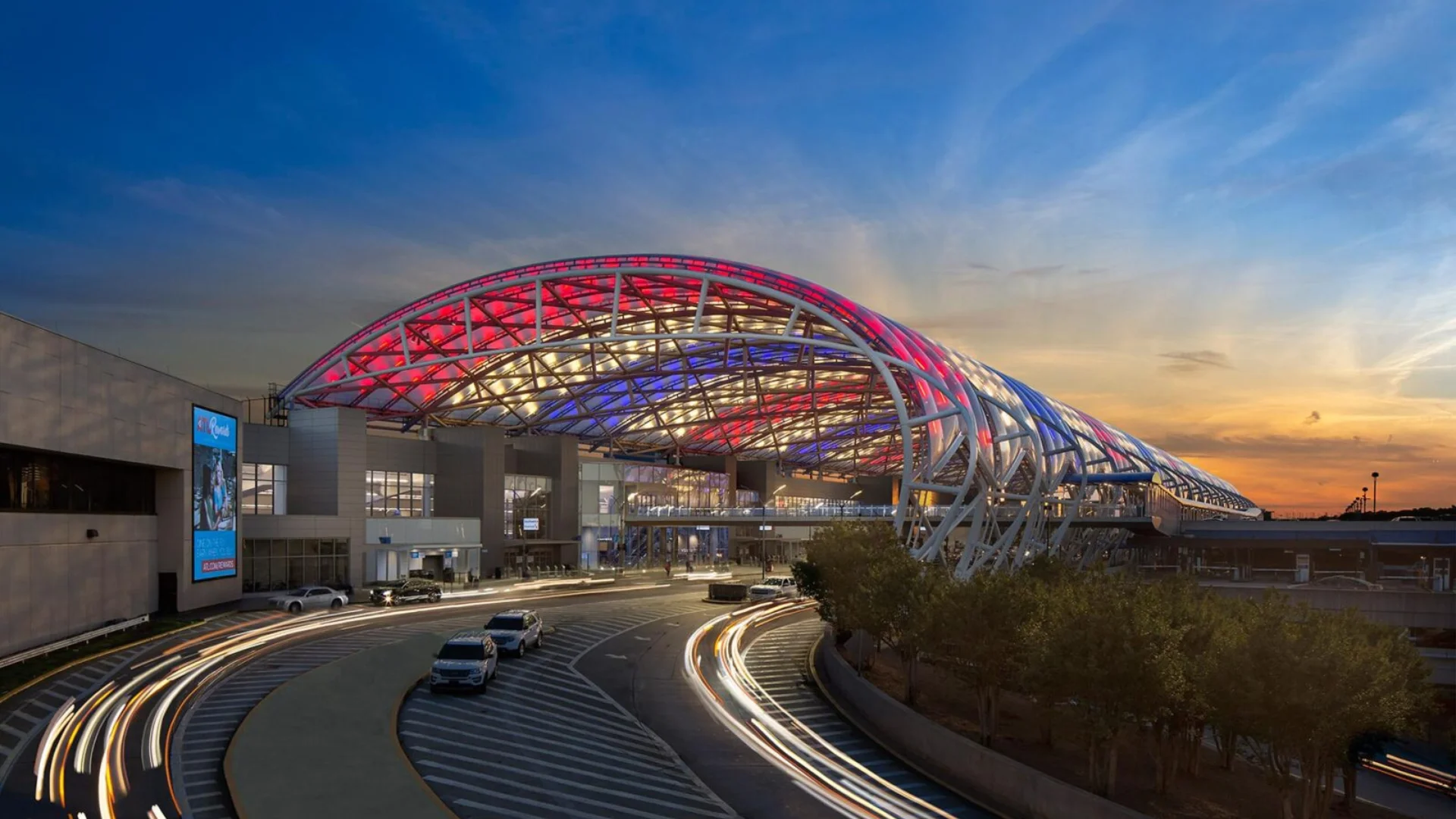A major development occurred in May 1961 when Atlanta Municipal Airport opened its Jet Terminal, then the largest in the country. This facility enabled transatlantic flights and further increased capacity. In subsequent decades, new concourses were added, including those designed to accommodate growing domestic and international demand.
The current midfield terminal complex was commissioned in 1977 and opened in September 1980 with North and South Terminals connected by several concourses. Over time, new runways were built—including a fifth runway that opened in 2006—to handle more aircraft movements efficiently.
In recent years, ATL has continued to serve over 2,000 daily arrivals and departures across more than 150 domestic destinations and around 70 international ones. Delta Air Lines dominates operations at ATL, operating about three-quarters of all flights.
Unlike many global airports that have expanded by adding multiple terminals—such as Los Angeles International Airport with nine terminals or Dallas/Fort Worth International Airport with five—ATL maintains a single linear concourse layout accessible via underground trains or walkways connecting seven parallel concourses. The design centralizes passenger movement and minimizes walking distances.
"Overall, Hartsfield-Jackson Atlanta International Airport utilizes a single linear concourse layout. From the main terminal complex, passengers have access across seven parallel concourses. Passengers can connect to each concourse via an underground train or pedestrian walkways," according to airport sources.
The dominance of Delta Air Lines at ATL reduces the need for separate terminal spaces dedicated to different airlines or alliances—a common practice at other large hub airports intended to ease congestion or streamline connections within alliances such as SkyTeam or Star Alliance.
"In general, the two-terminal system utilized by ATL works because of the overall layout of the airport. It was specifically designed for centralized operations, dating back to the introduction of early terminals at the airport," officials explain.
This approach enables Hartsfield-Jackson Atlanta International Airport to support some of the highest traffic volumes globally without requiring additional terminal buildings—an uncommon model among airports of similar size and scope.
 Alerts Sign-up
Alerts Sign-up





































